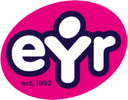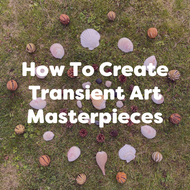How To Create Transient Art Masterpieces
Posted by EYR Team on 5th Nov 2018
read more
This blog post has been written by Jeanette Morris. Jeanette is an Early Years Specialist with over 33 years of experience and passion for Early Years Education.
Summertime, whether sunny or raining, is a time to be out and about. Whether its a visit to the park, the countryside, beach or shops, the opportunity to collect treasure is always present.
Transient Art is non permanent, constantly evolving and process orientated creativity in action. When children are involved in creating transient art, they manipulate, explore and experiment, as they work individually or collaboratively on either large or small scale projects.
Loose parts are key for transient art. For young children, loose parts means alluring, beautiful, found objects and materials that can be moved, manipulated, controlled and changed during play. Children can carry, combine, redesign, line up, take apart and put loose parts back together in endless ways, there are no specific directions and they can be used alone or combined with other materials. In conclusion, loose parts are the ultimate open ended resource.
Benefits of Transient Art
Transient art can be linked to many areas of learning.
- Using natural materials offers opportunities for children to explore their senses and improve cognitive ability.
- Open ended play allows children to develop and master skills at their own pace.
- It provides new experiences for children to extend their own learning
- It enables children to think creatively, develop concepts, plan and represent ideas.
- It improves concentration and the ability to complete tasks.
How to Create Transient Art:
- Gather as many objects and materials as possible in and around your setting, or use treasures previously collected.
- Once you’ve gathered everything, separate into small sets of similar objects.
- Define a creative space for the investigation, use a sheet of paper, a tray, plate, mirror, woven or cork mat.
- Then create a frame by using individual twigs, long grass, stems, card strips or even a recycled picture frame.
- Place your frame in the centre with your objects and materials around it and you’re ready to begin.
Encourage your children to think imaginatively, there are no boundaries and the outcome is unique to its creator. As this is a child led activity, encourage your children to describe what they have put together and talk about the objects and materials used. For example, describe individual properties like textures, shape and size. Or, maybe there is a story behind the creation and you can help to develop the narrative together.
Once you’ve finished, either leave a ‘work in progress’ label to allow the opportunity to revisit, take a photo or, for older children, draw or write about their creation. The best thing about Transient Art is that children can develop a picture over and over again, creating different variations and sequences each time.
Visit our selection of handy transient art resources to supplement your loose parts collections.
We would to see the masterpieces that your little ones come up with! Share your images with us on social media by tagging us or using the hashtag #ExploreWithEYR



